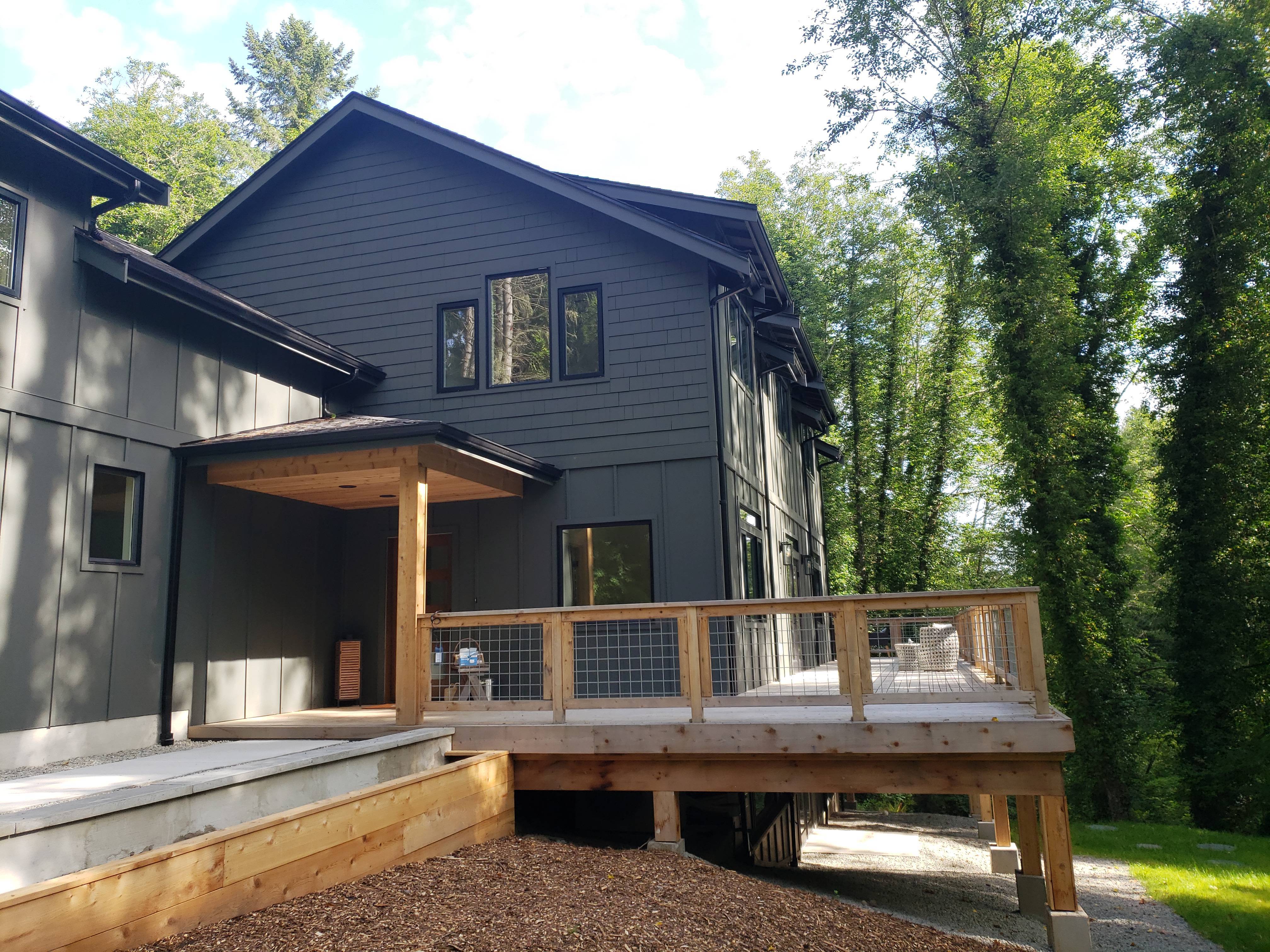Wood Destroying Organisms
This report includes a structural pest inspection embedded within the report. All observations in this report that begin with WDO are a part of a WA State Pest Inspection. Orca Inspection Services LLC employs Dylan Chalk, Licensed Structural Pest Inspector ##65540. Please note that most WDO observations are related to high moisture conditions that could be conducive to mold-like substances. Orca Inspection Services LLC is not a mold specialist and recommends consulting with an industrial hygienist or other mold remediation expert if concerned about mold or indoor air quality.Pest Inspection Standards in Washington State - WAC 16-228-2045 - REQUIRES THAT A DIAGRAM / DRAWING BE PREPARED FOR WOOD DESTROYING ORGANISM (WDO) REPORTS. IF THE PHOTOS AND DESCRIPTIONS IN THIS REPORT ARE INADEQUATE, A DRAWING IS AVAILABLE UPON REQUEST.
Summary
Major Concerns
- EG-6 Exterior/Garage:
Inconsistent flashings were noted for the horizontal trim above windows and doors and horizontal junctures - see window trim at exposed south-facing shingle siding. This can lead to concealed water entry and damage to those horizontal junctures that have not been flashed, especially where exposed to the weather. A metal flashing shall be provided for areas like this that could allow water entry. Hire a licensed general contractor to further evaluate and repair to ensure reliable performance. This needs to be installed at exposed south-facing windows with the shingle style siding.
Repairs
- G-2 Grounds:
Eliminate wood /soil contact to reduce the chances for rot and pest damage and repair any hidden rot as needed - see east side planter. Generally, a 6-inch clearance between soils and wood is recommended. Repairs should be made to get as much clearance as is possible and all contact with the soils should be eliminated.
- EG-2 Exterior/Garage:
Localized caulking failure was noted on the exterior - see around window frames and in some trim. Preventative caulking maintenance can help keep these areas weather proof and prevent wood decay and water damage. Have the exterior further evaluated and re-caulked and painted as needed.
- EG-4 Exterior/Garage:
Concrete finishes have been installed in contact with the decking. The manufacturer recommends a minimum 1-inch to 2-inch gap between siding and decking, depending on exposure. Have this further evaluated by a qualified contractor and repaired as recommended. Please note that this can be difficult to correct at this point.
- EG-5 Exterior/Garage:
Inadequate kick-out flashings were noted between the roof and wall junctures. These are important to divert water away from the siding and onto the roof to prevent water from running behind the siding. No signs of water damage were found during inspection, so repair may not be urgent, but problems at roof to wall junctures can cause serious water damage if they develop. Hire a qualified contractor familiar with siding installation to further evaluate and repair.
- EG-7 Exterior/Garage:
The metal flashings, which are designed to prevent water from seeping behind penetrations in the siding system, are not correctly sloped to drain in places. This reverse slope can cause water to run back behind the siding and can lead to water damage and even concealed water damage. As a general rule, all exterior details should be sloped to shed water. This can be tricky to correct at this point. In addition, the base of the siding has not been given the proper 1/4 inch gap - see how the siding is run right to the flashings. This is not a recommended edge treatment for James Hardie. Have these further investigated and repaired as recommended by a qualified general contractor.
- EG-8 Exterior/Garage:
A starter course has not been installed for the shingle siding. This could lead to exposed building wrap at joints and even leakage. Have this further evaluated and repaired as recommended by a qualified siding contractor.
- FB1-4 Family Bathroom:
The tile grout is showing signs of absorbing moisture when running the shower. Tile and grout should be regularly cleaned and sealed with grout sealer to minimize water penetration behind the tile - see especially inside shower surrounds - main bath. This should be a routine procedure with tile unless epoxy grout was used. If this is not done in epoxy grout plan on annual cleaning and sealing tile grout inside the shower surrounds to prolong the useful life of the tile. Prior to sealing, replace any failing grout and caulking at inside corners. At inside corners, the sanded caulking works well and can be selected to match existing grout.
- MB3-5 Main Bathroom:
Missing / incomplete grout was noted in the master bath shower surround. Reliable grouting of shower surrounds is critical for the tile to preform reliably. Have the tile further evaluated and repaired as recommended by a qualified tile setter.
Recommended Maintenance Items
- RA-3 Roof/Attic:
The gutters are clogged with organic debris and require cleaning to ensure proper control of roof runoff. Clean the gutters and ensure they are unobstructed, leak free and properly sloped to drain. This is routine house maintenance; I would expect the need to clean gutters and downspouts regularly.
Monitors
- EG-9 Exterior/Garage:
The exterior trim system here has been done as a picture framed or cap over trim, where the trim is not lead into the siding but laid over the top of the siding - see the board and baton style siding system. This is a common practice, but is sub-standard. All points subject to moisture entry shall be appropriately flashed. There is not a commonly accepted flashing detail for the "cap over detail" that I am aware of. The hope here is that the flange on the window will act as the flashing for this wall penetration. The risk here is water can collect behind the trim and could leak into the siding where nails from the trim penetrate the siding. I would be most concerned about the exposed trim details. I saw no evidence of window leakage today: monitor during inclement weather to see if a repair should be needed.
.png)





